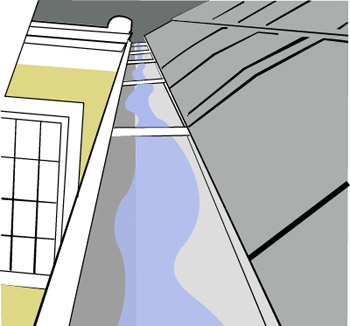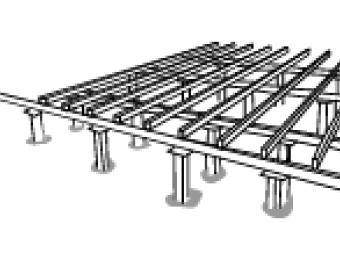
What is guttering?
Guttering may best be described as troughs which collect rainwater from your roof and divert it away from your walls and foundations. Rainwater is channeled from the roof into your gutters. From here it flows off the roof and down through a spout or spouts which are connected to drains or water storage containers. Gutters are also known as eaves troughs, or eaves channels in some places.
Why is guttering important?
Water which is allowed to run directly down walls can cause damage to the foundations of your home. Water can also damage your exterior wall finishes, or make a mess by spraying mud back up your walls. If your home has a basement level or is set into a hill, then it is particularly important to direct water elsewhere, so that the lower floors remains dry and stable.
How is guttering designed and constructed?
Your roof can be designed and constructed so that it incorporates guttering. Otherwise, guttering can be attached to your roof, or to the walls (if your house lacks eaves).
Maintenance is an important aspect of guttering, and it's a good idea to consider both how regularly different guttering types will need to be cleared, and how much effort will be involved. Without regular cleaning, gutters can become clogged with leaves, dirt, and other debris, causing blockages. Blocked gutters can also provide a breeding ground for mosquitoes and other insects. Some climates might need extra large gutters to accommodate heavier rainfalls.
If you live in a bushfire prone area it's a particularly good idea to regularly clean out your gutters (or to install covered gutters if you don't already have them) to make sure that they aren't a fire hazard.
What variations of guttering are there?
- Box gutters - Box gutters are a part of the roof structure. They tend to be hidden in the eaves and valleys of your roof. They are also known as parallel or trough gutters.
- Seamless gutters - Seamless gutters are usually made in one long length. They are made on site so that they can be individually tailored to the shape of the perimeter of your roof. Gutters tend to decay at the site of their joins. Seamless gutters therefore tend to last longer than gutters with joins.
- Covered gutters - Covered gutters are either solid tubes or come with a mesh lid or louvres to screen out leaves and other debris. This prevents your gutters from becoming blocked. Homes built in bushfire prone regions must be covered or fitted with screens to prevent sparks from igniting debris that may have built up in gutters.





